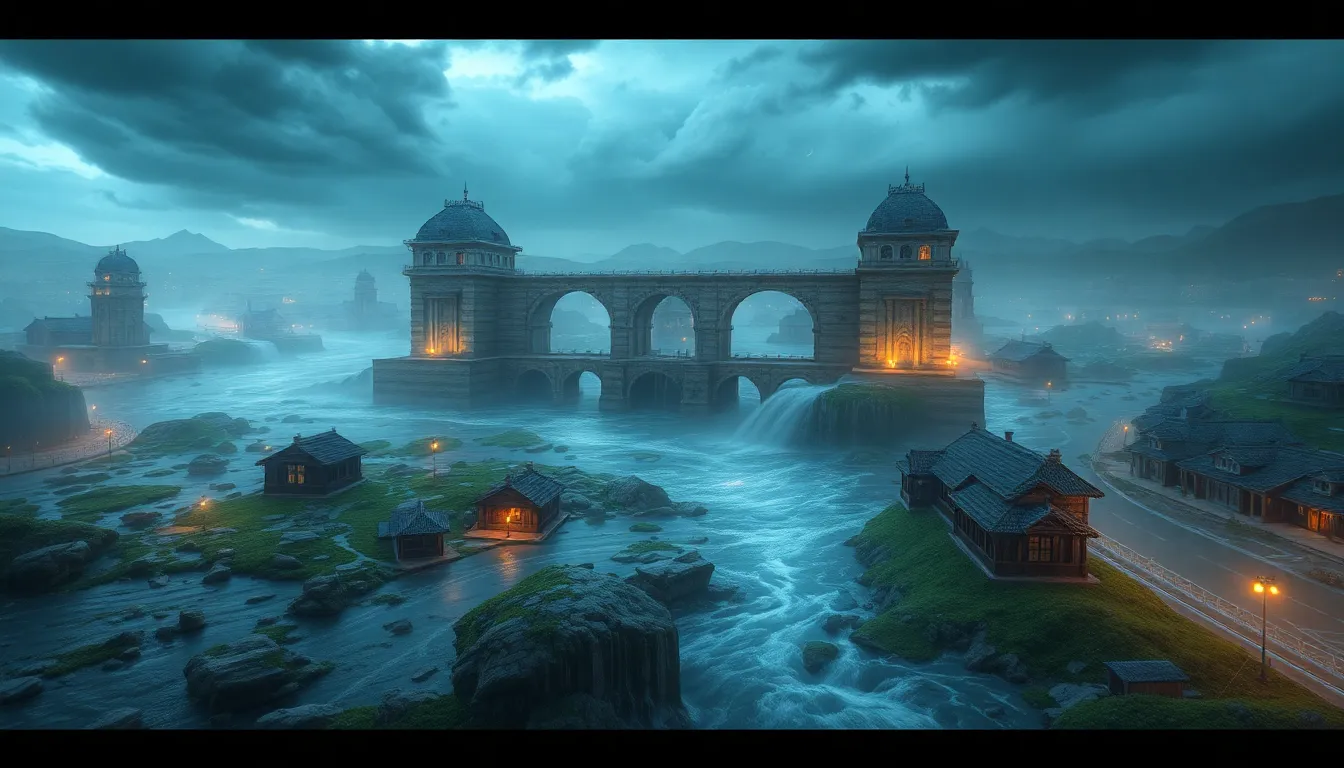The Flood as a Catalyst for Innovation: Myths That Inspire Change
Introduction: The Intersection of Myth and Innovation
Floods have held a profound symbolic significance across various cultures throughout history. Often depicted as divine retribution or purification, floods are woven into mythologies that reflect humanity’s deepest fears and aspirations. Beyond their destructive potential, these natural disasters have served as catalysts for innovation, prompting societies to adapt, rethink, and create anew. This article explores the intersection of flood myths and innovation, illustrating how these ancient stories inspire contemporary change and resilience.
Historical Context: Flood Myths Across Cultures
Major flood myths can be found in numerous cultures, each with its unique narrative yet sharing common themes. For instance:
- Noah’s Ark: From the Judeo-Christian tradition, this story emphasizes themes of divine judgment and mercy, showcasing survival through faith.
- The Epic of Gilgamesh: In this ancient Mesopotamian tale, a flood wipes out humanity, with Utnapishtim surviving through divine instruction, highlighting the relationship between gods and mortals.
- Hindu Flood Myth: In Hindu tradition, the story of Manu and the fish illustrates the cyclical nature of creation and destruction, portraying floods as a means of cleansing the earth.
These myths often emerge from specific historical and environmental contexts, reflecting the societies’ experiences with natural disasters and their attempts to make sense of them.
The Psychological Impact of Flood Myths
Flood myths serve as mirrors to humanity’s complex relationship with nature. They encapsulate:
- Fear and Survival: The primal fear of floods can inspire innovation as communities seek to prevent or mitigate future disasters.
- Psychological Resilience: The narratives of survival and rebirth foster creativity and resilience, encouraging societies to adapt and innovate in the face of adversity.
In essence, these myths remind us that humanity’s greatest challenges often provoke our most profound innovations.
Floods as Metaphors for Change and Transformation
The flood serves as a powerful metaphor for renewal and transformation. In many cultures, it signifies not just destruction but the potential for rebirth. Some key points include:
- Destruction leads to new beginnings, allowing societies to rebuild with better strategies and technologies.
- Floods can catalyze social change, leading to shifts in governance, policy, and community structure.
Case studies of societies that underwent transformative change post-disaster illustrate this connection, showing how floods have redefined landscapes and mindsets.
Innovation in Architecture and Urban Planning Post-Flood
Historically, significant floods have prompted innovations in architecture and urban planning. Examples include:
- The Chicago River: After the Great Chicago Fire of 1871, the city implemented improved drainage systems and elevated buildings to prevent future flooding.
- New Orleans: Post-Hurricane Katrina, the city adopted innovative flood defenses, including levees and wetlands restoration projects.
Modern urban planning strategies are increasingly influenced by flood mythology and experiences, emphasizing sustainable design practices that address flooding risks while enhancing community resilience.
Technological Advancements Driven by Floods
Flooding has spurred significant technological advancements, including:
- Flood Prediction Models: These tools utilize data to forecast flood events, enhancing preparedness and response efforts.
- Water Management Systems: Innovations in water management, such as smart drainage systems, have emerged to cope with increased rainfall and flooding.
Looking to the future, ongoing challenges related to floods may lead to further technological innovations, particularly in disaster preparedness and recovery.
Cultural Expressions of Change: Art and Literature Inspired by Flood Myths
Flood myths have significantly influenced art and literature, serving as powerful narratives that encapsulate human experiences of loss and renewal. Notable examples include:
- Artworks: Many artists have depicted floods as symbols of change, using their mediums to explore themes of destruction and rebirth.
- Literary Works: Novels and poems have drawn on flood narratives to examine human resilience and the cyclical nature of life.
Storytelling plays a crucial role in preserving the lessons learned from flood experiences, allowing societies to reflect on their past while inspiring future generations.
Case Studies: Real-World Examples of Flood-Inspired Innovation
Specific instances where floods have led to significant innovations include:
- Post-Katrina New Orleans: The city’s recovery efforts resulted in new approaches to urban planning and community engagement.
- The Netherlands: Known for its advanced water management systems, the country has continuously innovated in response to its flood-prone landscape.
Insights from innovators and thought leaders illustrate the transformative power of floods, emphasizing the lessons learned and the importance of adaptation.
The Role of Community and Collaboration in Flood Recovery and Innovation
Community resilience and collaboration are essential in the aftermath of floods. Key points include:
- Collective Action: Communities that unite in their recovery efforts often experience more successful outcomes, fostering innovation through collaboration.
- Knowledge Sharing: Communities can learn from each other’s experiences, leading to the development of innovative solutions tailored to specific challenges.
In conclusion, floods, as catalysts for innovation, inspire change across various domains, from technology and architecture to art and community collaboration. By examining the myths and real-world examples, we uncover the profound lessons floods impart, urging us to adapt, innovate, and thrive in the face of adversity.


